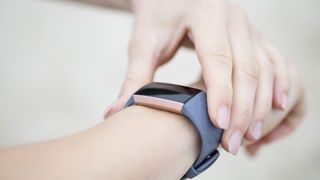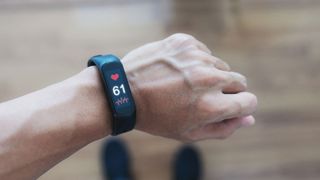If you want to get more active, you are on the right track. The World Health Organization says adults should do at least 150 minutes of moderate physical activity a week, while children and teenagers should do 60 minutes a day. Many of us are not getting enough exercise and turn to fitness trackers to monitor our progress. But how exactly are fitness trackers? Fortunately, there is a wealth of research out there to help you find out, and we’ve checked out the latest. We have split up the basic functions of the trackers; Monitored energy expenditure (calories burned), step count and heart rate and discovered how good they are at counting each one. Read on to find out how they’re doing and check out our guide to the best Fitbit deals before you buy yours.
Today’s best deals on fitness activity trackers
How accurate are fitness trackers? An overview
The global market for wearables is growing rapidly and today includes devices as diverse as “bite counters” for monitoring your diet, GPS systems for tracking family members on the move and virtual fitness devices that conveniently simulate outdoor training in your own home. Fitness trackers are a big part of this trend, contributing $ 36 billion to the global economy in 2020, according to Fortune Business Insights. The most sophisticated go beyond the basics of calorie expenditure, steps taken, and heart rate trends to monitor sleep duration and quality, and even our breathing.
But how exactly are fitness trackers? Scientists have done numerous studies on them, and the big picture is that accuracy will vary depending on the technology used and what the tracker is trying to measure. Read on for the breakdown …
(Image credit: Getty)
How Accurate are fitness trackers when it comes to calories?
Any activity you engage in should increase the number of calories burned (your total energy expenditure, or TEE), though some researchers are now questioning this widely held theory – check out this 2015 report in the American Journal of Human Biology to see why . Assuming TEE is still a valid measurement, any fitness tracker needs to accurately estimate your activity level in order to calculate it.
A 2020 review of the latest research on trackers in the British Journal of Sports Medicine found that wrist or arm trackers that measure energy use vary in accuracy depending on the task being performed. If body movement was the only measured parameter, they were less accurate than if the tracker also included a heart rate monitor or a thermal sensor.
Trackers rated for a 2019 report in the International Journal of Environmental Research and Public Health were more than 10% off when measuring TEE. When measuring aerobic workouts, TEE was overestimated at a slower work pace and underestimated at a higher work pace. During anaerobic exercise, trackers generally underestimated the amount of energy used.
Another study on tracker accuracy, published in the International Journal of Environmental Research in 2018, found, “Mainstream devices are capable of reliably measuring heart rate, number of steps, distance and length of sleep, which are effective indicators of how long Health assessment can be used, but the measurement accuracy of energy consumption is still insufficient. Different brands of fitness trackers differ in the way they measure the indicators and are all affected by activity level, which suggests that fitness tracker manufacturers need to improve their algorithms for different activity levels. ”In short, what you do affects how exactly Your tracker in estimating TEE is.
How accurate are fitness trackers at counting steps?
(Image credit: Getty)
A 2020 study published in the International Journal of Environmental Research and Public Health looked at 11 different trackers – some “wearables” and others that work through mobile phone apps. Step count accuracy varied between trackers, but they tended to do better at correctly counting steps with brisk walking than with everyday activities and intermittent walking, when arm movements were counted incorrectly more often than steps. The tendency of trackers to miscalculate steps at slower speeds was also found in a 2020 study in the PeerJ-Journal that compared a wrist-worn fitness tracker with a “research-grade” tracker worn on the ankle and it was stated: “Both … are valid in recognizing steps at selected walking speeds in healthy adults under controlled conditions. However, both the activity tracker incorrectly counts steps at slow walking speeds, and the consumer-rated activity tracker also incorrectly counts steps at fast walking speeds. ”
A 2019 study published in PLoS One found the same deterioration in accuracy at low or intermittent walking speeds. Since fitness trackers are now used to monitor the activity level of cardiac patients who often need breaks while walking, researchers are calling for an improvement in the accuracy of fitness trackers when measuring this type of movement.
How Accurate Are Fitness Trackers Regarding Heart Rate?
(Image credit: Getty)
Earlier generation fitness trackers came with a chest strap to measure your heart rate by tracking the electrical signals in your body. However, these devices did not work for people with metal implants because they interfered with the signals, and they were also more suitable for physical activity rather than all day wear. Today, modern fitness trackers are mostly worn on the wrist and measure the heart rate using so-called photoplethysmography (PPG). This optical technology measures how the light that enters the body is scattered as your body flows around your body – the sensors can very easily “see” your heart rate.
The back of the tracker contains LEDs (light-emitting diodes) that send waves of light into your skin. More technology in the device, known as a photodetector, captures the light reflected from the wearer’s wrist, which is then converted into information that the device’s built-in algorithms can analyze to determine your heart rate.
But how exactly do fitness trackers measure your heart rate?
People who use fitness trackers to monitor their average heart rate can rest easy knowing that a 2018 study by Digital Health found they were good at guessing overall heart rate. However, the same report found that accuracy varied significantly between different devices.
A 2020 study by JMIR mHealth and uHealth found that optical heart rate monitors “generally provide accurate heart rate readings regardless of the age of the user.” Still, it cautioned not to rely entirely on the results, adding, “These devices have a tendency to produce erroneous, extreme readings that could misinterpret training intensity in real time, likely benefiting from the development of improved models of heart rate sensors.” It More research is needed to find out what is causing these extreme results.
(Image credit: Getty)
How important is accuracy in fitness trackers?
Whether a fitness tracker is accurate or not therefore depends on many factors, but experts seem to agree on one advantage. A 2018 review of existing research in the journals JMIR mHealth and uHealth found that people who used fitness trackers tended to become more active, increase their step count, exercise moderately, and increase their energy expenditure. They also found that trackers help users maintain good habits over the long term, and they could be useful for health professionals who monitor their patients’ health. So check out our guide to the best fitness trackers to find the one that best fits your needs and get started!
Today’s best deals on fitness activity trackers





